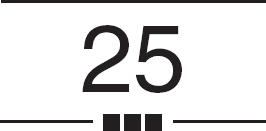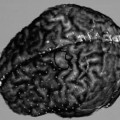
Controversies in Image-Guided Spine Surgery
Traditionally, stereotaxy utilized a fixed reference or fiducial system to create reference marks on the image that have known positions with respect to the frame. The advent of computed tomography (CT) in the late 1970s sparked a rapid evolution of stereotactic neurosurgery. The inherent two-dimensional aspect of the axial CT scan allowed for accurate identification of the x and y coordinates; however, determination of z-axis coordinates remained problematic. This was solved in 1980 with the development of a fiducial system known as the N bar configuration of the modern stereotactic frame. Each bar is seen in cross section on every axial slice. The distance between the center bar and the adjacent bars is used to calculate the z-axis coordinates. Kelly introduced volumetric stereotactic guidance for tumor resection in the early 1980s.1 CT data were transferred to a computer workstation to create a three-dimensional (3-D) rendering, thus defining the target as a volume rather than a point in space. These advances allowed the rigid framed system with its restrictive, complex, and nonintuitive nature to evolve into the field of frameless stereotaxy.
Frameless stereotaxy utilizes 3-D reconstruction of digital images obtained from CT or magnetic resonance (MR) scans and complex algorithms to create a fixed relationship between the image space and the physical space. This process is known as registration and is based upon a fiducial system. Through registration there is a complete mapping of each point in the reconstructed images to the physical space of the patient. Once localization is accomplished, the 3-D anatomy of the patient can be viewed and intraoperative interactive 3-D targeting can be performed.
Frameless stereotactic neurosurgery has been effectively applied to cranial applications, reducing morbidity involved in resection of tumors and vascular lesions, and for precise cannulation of the ventricular system.2–5 Given the successful application of frameless stereotactic image-guided surgery for cranial lesions, there has been increased interest in applying this technology to the spinal axis.6–12 Currently, frameless stereotaxy has found its greatest utility in the spine as an aid in instrumentation procedures.6,13–17 Prior to frameless guidance, experienced surgeons relied on their understanding of anatomy based on two-dimensional preoperative and intraoperative images, anatomical landmarks, and tactile feedback during surgery to ensure accurate and safe placement of instrumentation. Lack of proper anatomical landmarks, significant deformation, and poor intraoperative imaging can increase morbidity in spinal reconstructive procedures. Frameless stereotactic guidance appears to provide increased accuracy in placement of spinal instrumentation and thus should decrease the morbidity associated with these operations.
Several frameless stereotactic systems are currently available to the spine surgeon, including the Vector-Vision2 Spine (BrainLAB USA, Redwood City, CA), the Optical Tracking System (Radionics, Burlington, MA), and StealthStation (Medtronic, Louisville, CO). At our institution, we have used the StealthStation for spinal applications. The chief components of the system include a computer workstation onto which the digital images of the spine are transferred either via optical disc or network interface. Once loaded onto the station, complex mathematical registration algorithms are performed formed to enable preoperative and intraoperative planning. Movement of the vertebral segment is tracked in real time with a dynamic reference arc and various customized spinal surgical instruments equipped with light emitting diodes (LEDs). The spatial position of the arc and instruments is tracked via an optical camera array (Figs. 25–1 and 25–2).18
The general steps required to use frameless spinal stereotaxis are relatively similar for all systems. Prior to surgery, a CT scan of the spinal levels of interest is obtained using a standard protocol. The scan is transferred to the computer workstation either via a network interface or optical media. The images are reformatted by the workstation into a 3-D reconstruction. Using this 3-D model, preoperative planning may be performed at the surgeon’s convenience. Several different views are created: axial, sagittal, and coronal, as well as axial and orthogonal views in relation to probe trajectory. During the planning, various trajectories, screw diameters, and depths may be tested on the model, and relationships to soft tissues are identified (Fig. 25–3).
The next step is registration. Registration begins with the selection of fiducials on the image set. These must be precise points that will be easily identified intraoperatively. This is in contrast to the “mobile markers” that are affixed to the patient’s scalp prior to scanning in cranial operations. The fiducials selected on the image set will be identified intraoperatively and mapped to the coordinate system of the image set. This process, known as paired-point registration, is the most common type of registration. A minimum of four points are necessary; however, increasing the number of points and the distance between the points will increase the registration accuracy.
In the operating room, the optical camera array is placed such that it will have an unobstructed view of the surgical field. The spine is exposed, taking care to preserve the bony landmarks yet exposing the anatomy sufficiently to identify the previously chosen fiducials. The first level of interest (vertebral segment) is identified, and the dynamic reference arc is rigidly fixed to the spinous process (Fig. 25–4). Every segment must be addressed individually because each level moves freely in relationship to the adjacent levels. The purpose of the arc is to track the motion of the individual segment as well as to track the instruments in a fixed relationship to that segment. At this point the fiducials are touched with a probe that is tracked by the optical array in relation to the dynamic reference arc. In doing so, the x, y, and z
Stay updated, free articles. Join our Telegram channel

Full access? Get Clinical Tree




